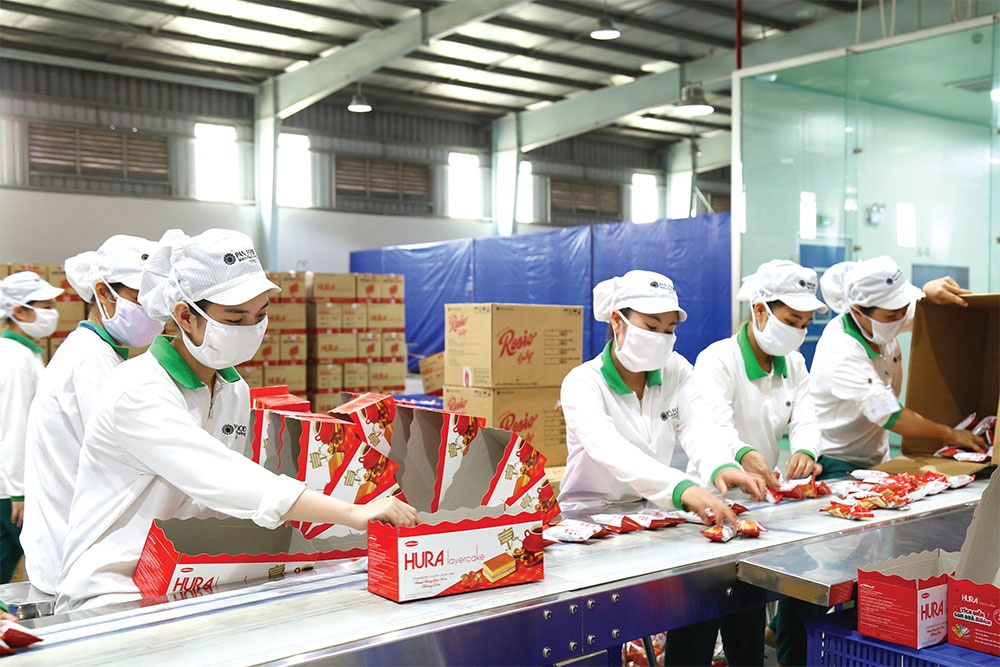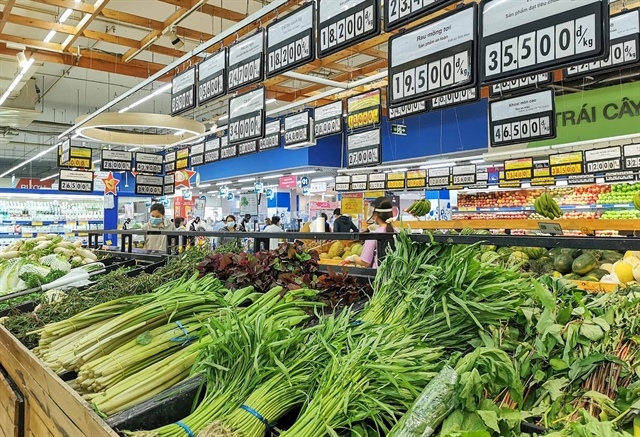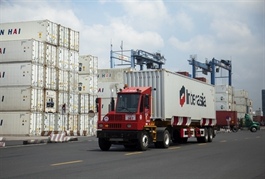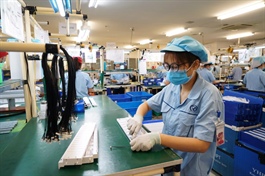Key economic pillar issues tackled head-on
Key economic pillar issues tackled head-on
The government will continue enacting new business solutions in a bid to spur economic growth, which struggled in the first quarter.

Deputy Minister of Planning and Investment Tran Quoc Phuong last week said his ministry had advised the government to order all provinces and cities to establish local-level special taskforces in charge of helping projects mired in difficulties.
“In addition to special taskforces set up by the government, these local-level taskforces are the first of their type in Vietnam. Chairpersons of provinces and cities will act as heads of their localities’ taskforces, which will have to work directly with all ventures that require help,” Phuong said.
This new solution is aimed to lift production and business activities out of difficulties as soon as possible, as enterprises have faced massive difficulties since early this year. “If this situation continues, it will be difficult to reach the government’s growth target of 6.5 per cent for the whole year,” Phuong added.
Prime Minister Pham Minh Chinh last week also required ministries and localities nationwide soon use sturdy solutions to help enterprises and individuals out of difficulties.
“We have no plan to revise the growth goal for the year. More efforts are to be made to boost production and business activities, and generate more employment,” PM Chinh said.
It is expected that this week the government will issue a new resolution on solutions to help enterprises, with a focus to be laid on continued reductions and exemptions of some types of taxes and fees, as compiled by the State Bank of Vietnam.
In Q1, the economy grew 3.32 per cent on-year, the second lowest Q1 growth in 12 years. The agro-forestry-fishery sector grew 2.52 per cent; the construction and industrial sector declined 0.4 per cent; and the service sector climbed 6.79 per cent.
Low economic growth is threatening other goals. For the economy to hit its targeted 6.5 per cent growth rate this year, it must grow 6.7 in Q2, 7.5 per cent in Q3, and 7.9 per cent in Q4. The growth rates for the remaining two quarters must be 1 and 0.8 percentage points higher than the Q3/Q4 growth scenario set earlier this year, according to the Ministry of Planning and Investment.
This means the growth for both quarters must well over double the 3.32 per cent growth rate in Q1, deemed a very challenging scenario.
Vietnam’s on-year index of industrial production in Q1 is estimated to fall 2.2 per cent “due to the world economy continuing to face massive difficulties and unpredictable fluctuations, besides high inflation and reductions in enterprises’ orders and exports,” said Nguyen Thi Huong, general director of the General Statistics Office.
In Q1, the mining sector fell 4.4 per cent compared to the corresponding period last year, while processing and manufacturing dropped 2.4 per cent on-year. Also, the electricity production and distribution sector went down by 1 per cent on-year. The reductions in these sectors all led to the big decrease in economic growth for Q1. “We must immediately review all types of policies and growth momentum so that we can use growth of favourable sectors to offset challenged sectors,” Phuong said.
The processing and manufacturing sector is now facing below-zero growth, Phuong added. “Thus, the remaining impetuses must receive special attention, with agriculture considered an important pillar. The service sector is growing well, so it must receive more support so that it can offset other sectors.”
In Q1, there were nearly 34,000 newly established businesses registered at nearly $13.5 billion and employing about 212,300 labourers – down 2 per cent in the number of enterprises, 34.1 per cent in registered capital, and 12.8 per cent in the number of employees as compared to the same period last year.
According to the Asian Development Bank’s official outlook update released last week, after a strong performance in 2022, Vietnam’s economic growth is expected to moderate at 6.5 per cent this year and expand at 6.8 per cent in 2024.
Fitch Solutions last week also said that Vietnam’s real GDP growth slowed sharply from 13.7 per cent on-year in Q3 of 2022 to 5.9 per cent in Q4; it remains cautious in its outlook for 2023.
“While the economy will receive support from a likely rebound in demand from China, it will not be enough to offset the impact of a further weakening in global demand,” Fitch Solutions said. “With domestic inflation also set to rise a little further and monetary tightening underway, we expect GDP growth to slow from 8.02 per cent in 2022 to 6.5 per cent in 2023, below the pre-pandemic average of 7 per cent.”
Meanwhile, FocusEconomics said, “Vietnam’s economic momentum will likely soften this year as growth rates for consumption, exports and investment decelerate. However, expansionary fiscal policy and China’s reopening should provide support, and Vietnam will likely remain ASEAN’s top performer in 2023.”
“Foreign exchange fluctuations, monetary policy, banking liquidity, and the property sector crunch are key factors to watch. Our panellists expect GDP to expand 6 per cent in 2023, down 0.1 percentage points from last month’s forecast.”
FocusEconomics’ Consensus Forecast panellists estimated that industrial output will grow 7.5 per cent in 2023, up 3.9 percentage points from last month’s forecast, and expand 8.3 per cent in 2024.

























